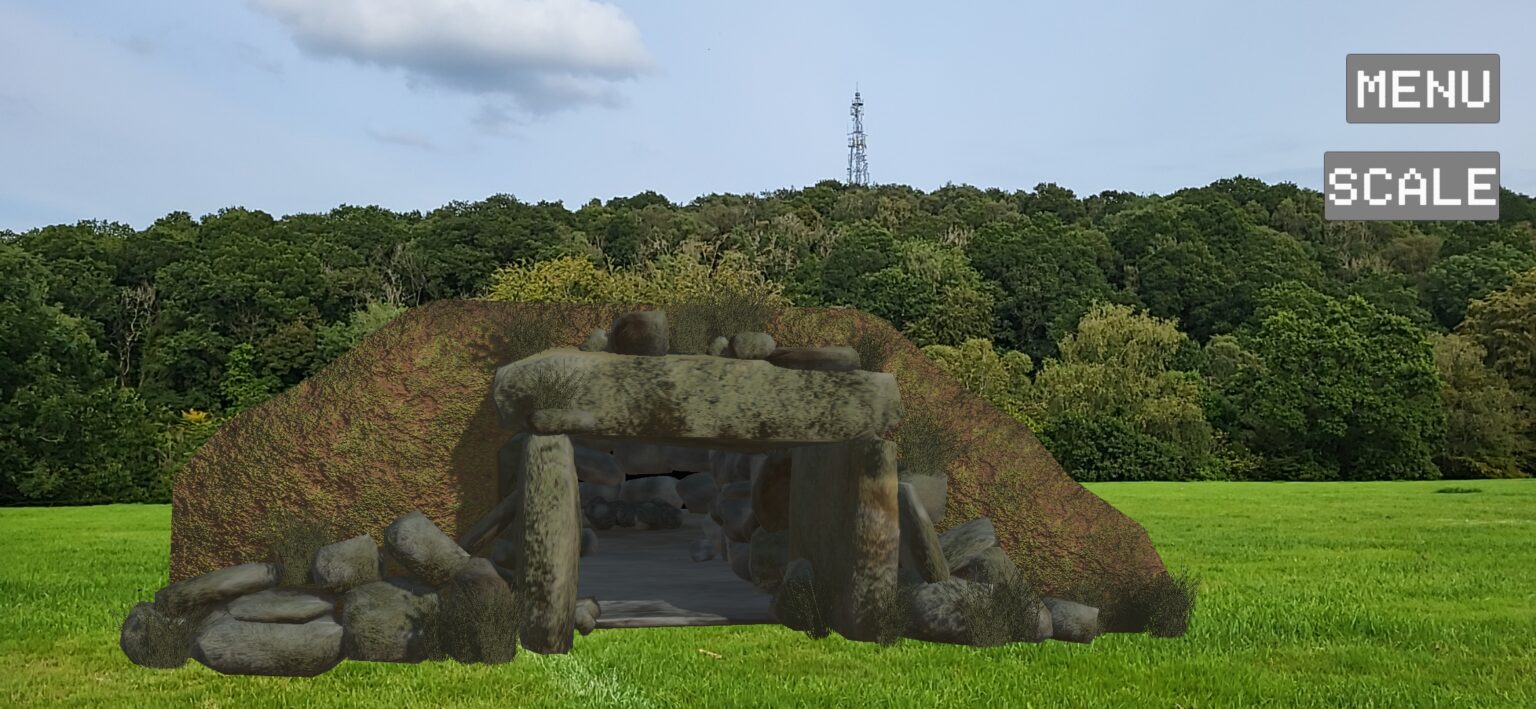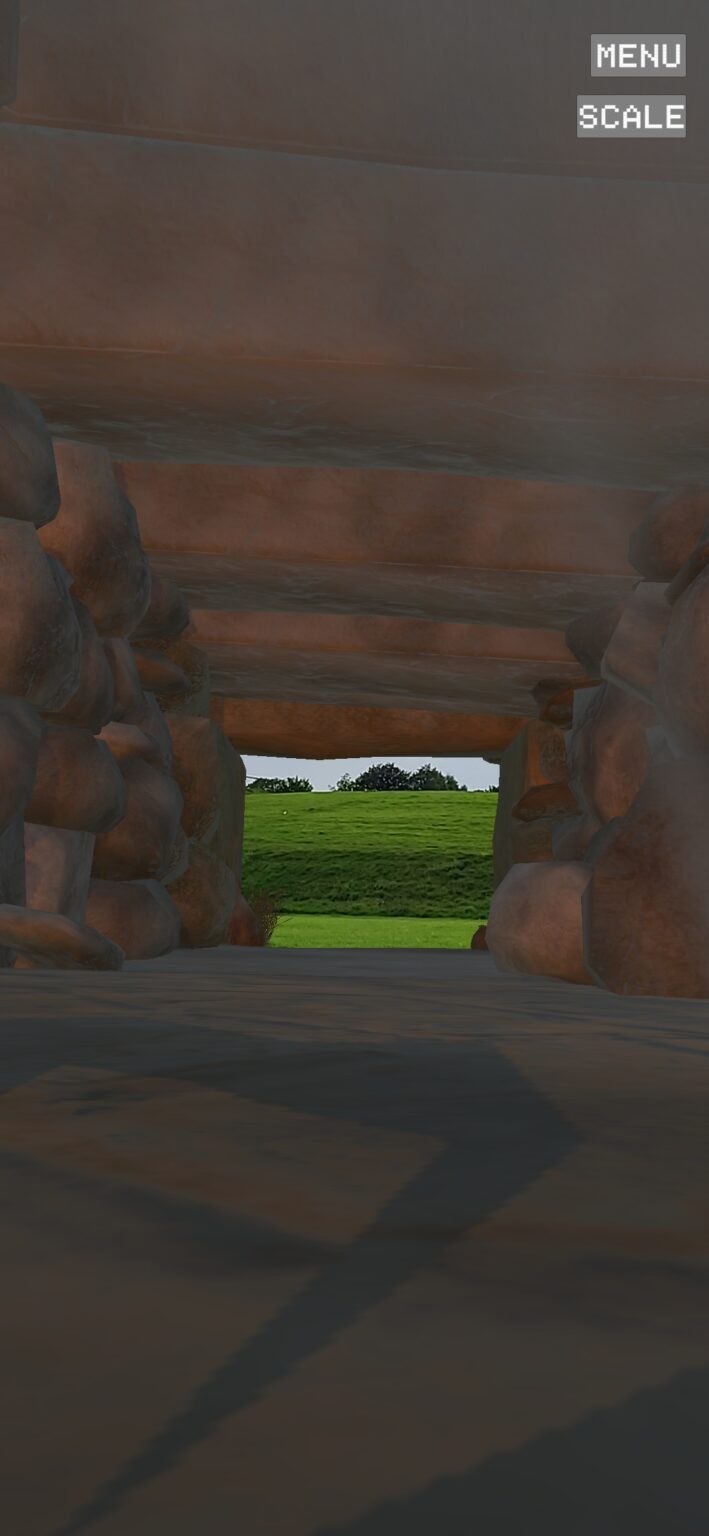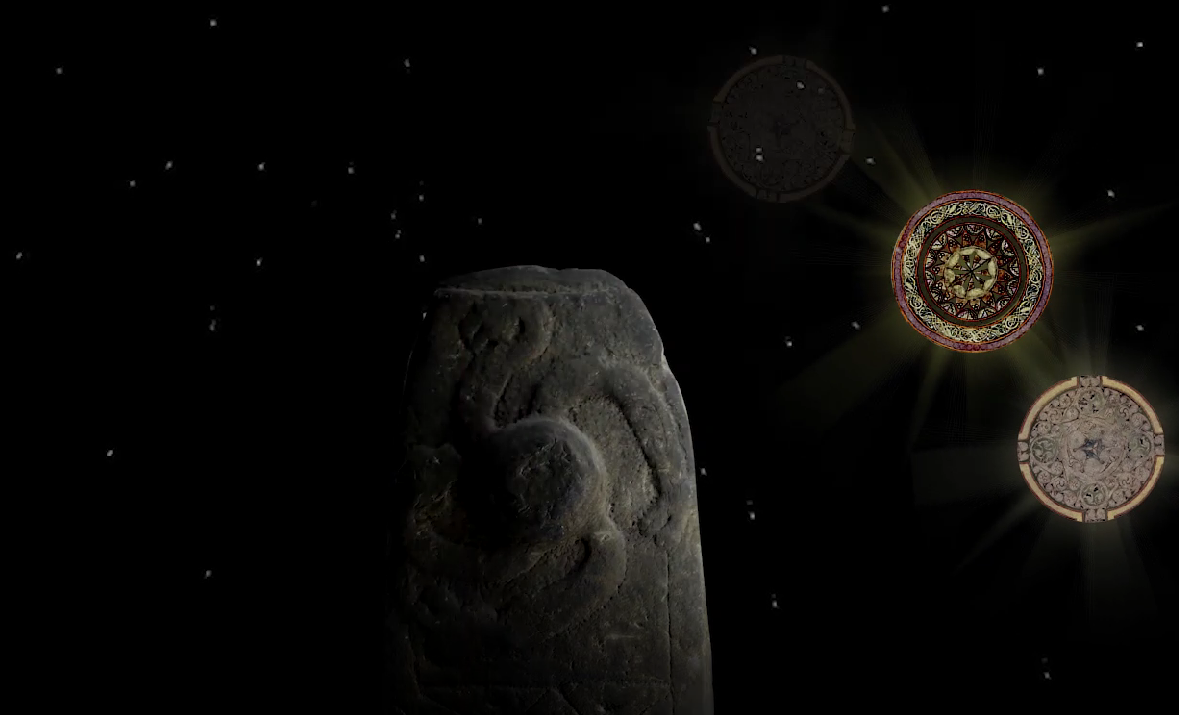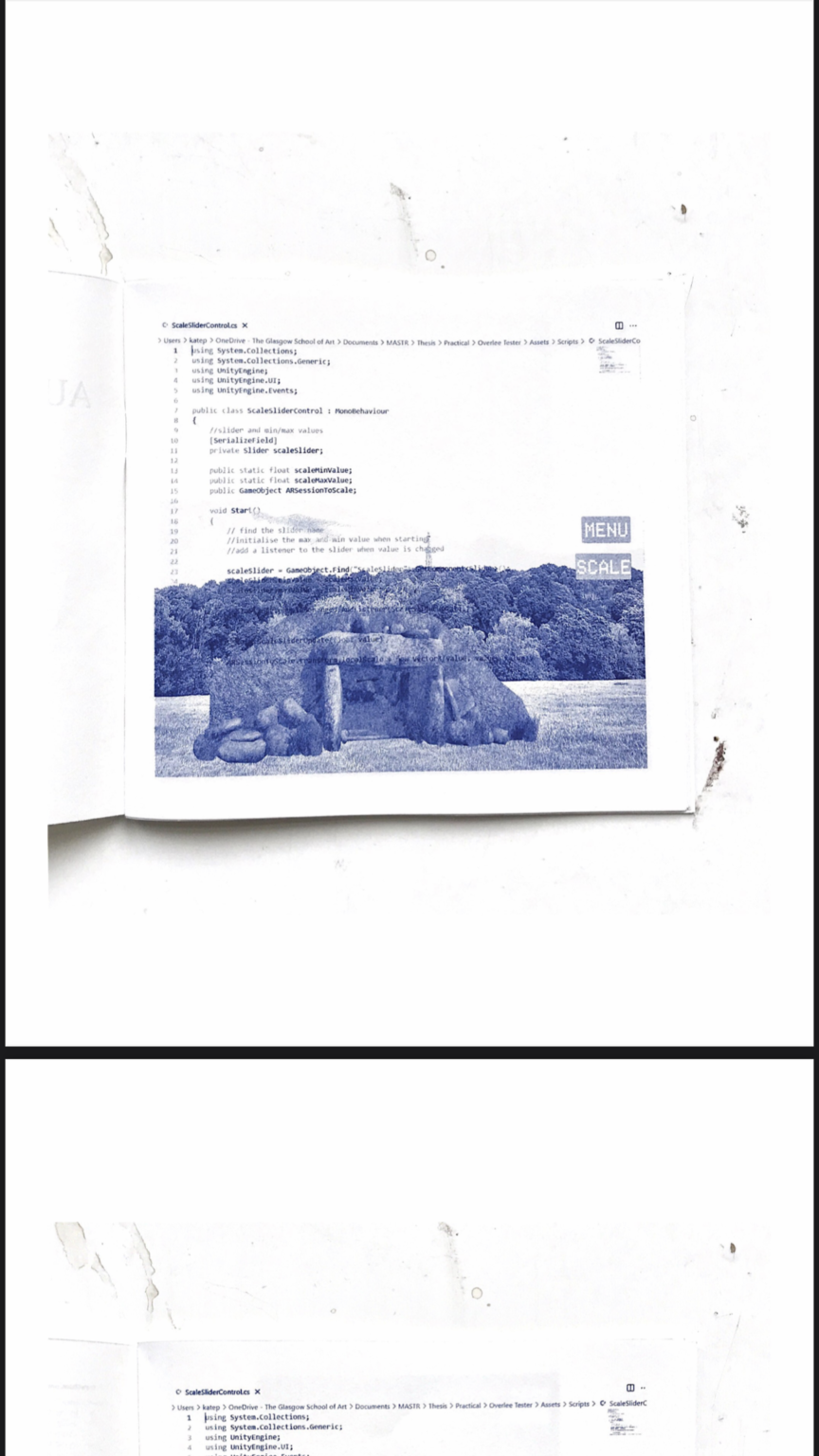Kate Prideaux (She/Her)

In understanding how digital heritage is rooted in art practice, each decision, be that creative or technological, is reflective of the subjective processes bound up in contemporary interpretation. This opens the opportunity to be playful, to work with multiple people in the profession, in the community, and to push the boundaries on the nature of experience itself.
I came from a background in BA Archaeology and Anthropology (graduating from UCL in 2019) and I have learnt many new technical skills over these months. Specifically, I have landed on an interest in augmented reality, virtual landscapes and photogrammetry – all of which I have translated into the practice of physical printmaking. I value the opportunity this degree has provided in transforming my conception of a static reconstruction into an artistic representation – opening a space for play and experimentation in the archaeologist/artist’s process as well as the user’s experience.
The following works reflect my learnings and trials of this notion.


Augmenting Prehistory: Overlee Souterrain
Augmenting Prehistory is an app that uses augmented reality (AR) to embed a virtual depiction within the sensory location of a site. Considering European prehistory, which is largely missing from contemporary landscapes, this project proposed to bridge a gap between intersections and essences that have persisted into the present as tangible or intangible traces of the past. This concept intended to foreground the artist/archaeologist process of constructing the depiction as much as allowing space for different user experiences and interactions.
This depiction focuses on the lost site of Overlee Souterrain, destroyed in the early 1800s, antiquarian written sources claimed there was once a hill that encompassed 41 of these individual souterrains. A souterrain is an underground structure that is typically ascribed as prehistoric Iron Age, yet their lifespan often extends further than this.
I interpreted a temporal ambiguity from these written sources and created a non-linear narrative to express potential experiences or scenarios triggered by the user’s movements within the AR. The presentation of a fire (of which the sources described) initially created a warmth and homely affectual encounter, however, I introduced doubt using the sudden dispersal of smoke – a consequence of little ventilation and one reason why archaeologists have dismissed the idea of a souterrain as a dwelling. This is followed by a modern day light installed in a concrete ceiling, a setup seen in existing souterrains that have been reroofed in recent years and is shining down onto fire-cracked rocks (described in the sources as a method of cooking) in a scientific and inspective, disconnected manner.
In a process of ‘thinking through doing’ (Watterson), constructing the souterrain rock by rock allowed me to devise further scenarios like shifting rock configurations to imply ambiguity in its appearance and a simulation of its destruction by triggering a collapse of the structure. Although these were not included in the final output, my future projects will allow time for these impromptu ideas to manifest.
Using transparent shaders in Unity, I created a portal that conceals the souterrain chamber into the wider landscape and act as the semi hidden structure would have done. The location is therefore integral to the experience and on an implementation of the app, I found myself exploring the modern location of Overlee Playing Fields before deciding where to place the AR. A unique spatio-temporal experience was thus generated due to this perceptual navigation through the senses, along with the virtual depiction and all of the meanings in between.
Augmented reality offers an opportunity for the public to amplify their participation with the past outside of a museum environment, with the ease of their own mobile phones.
The Govan Stones: The Life of a Sunstone
The life of a sunstone is a short movie that tells the story of Govan through time. A product of a group project, we conceptualised a playful narrative that touched on temporality, non-human actors and the fragmented nature of memory and subsequently the past. Together we made decisions, divided up roles, co-wrote a script, used the recording techniques of photogrammetry, RTI and laser scanning as well as compiled a coherent archive.
The project focal point on the Govan Stones led us to the process of constructing ‘digitised’ objects from non-digital originals and creating ‘born digital’ artefacts and environments to situate them in a depictive visualisation.
Based on research on the era and local area, my scene (pictured below) represented Govan in the 9th to 10th century. I used a combination of models that derived from photogrammetry (The Govan Stones), models created in Blender (Moot Hill, also known as Doomster Hill) and third party assets (trees and the medieval houses) to do this.
With a focus on creating an affectual encounter of the place, I curated a scene that employed Unity components such as an environment ‘skybox material’ that created an atmosphere, packages such as ‘terrain tools’ to sculpt the shape of the river and paint details, and also post-processing effects to simulate the blurred and distorted nature of memory. A camera animation began with the POV of the Sunstone looking down on itself and celestially rose to witness the wider landscape. It then proceeded to move toward Moot Hill, once ‘a place of power, assembly and identity’ for its people, before being cut short by the fragmented infiltration of the stones in the present day.
A powerful motif in this visualisation is that of replicas – the Jordan Hill Cross, now tangibly located outside of Govan Old Parish Church, is given a new context based on interpretations and theories of where the original may once have been.
Unfortunately, the video could not be presented online due to licencing of the music used.




Modelling Growth
A collection of outputs displaying the techniques I have learnt from the first 3D modelling assignment (using 3DS Max to model Kelvingrove Art Gallery & Museum), The Life of a Sunstone and my dissertation project, Augmenting Prehistory.








The Govan Stones: A Quest into the Clipping Plane
After submitting The Life of a Sunstone, I felt as though the weirdness of conceptualising, interacting and working within a virtual world was unacknowledged. These worlds provide affordances that extend our human perception and can give agency to non-human actors – this experimental practice holds no boundaries.
Where the clipping plane may traditionally establish a boundary is where I have attempted to venture.
Virtual Made Material
This side project stemmed from the harsh reality of obsolete digital data. Standards on recording and archiving digital information from initiatives like the London Charter and organisations like Archaeology Data Service (ADS) look to preserving and contextualising for the future, but in addition to this, I believe there is space for further artistic response.
Physical artworks hold an opportunity for archaeologist/artists to practically become more intimate with their work, as well as for anyone, their tangible presence can solidify its existence, and its experience, into something with an essence of memory, ephemerality and temporality.














































